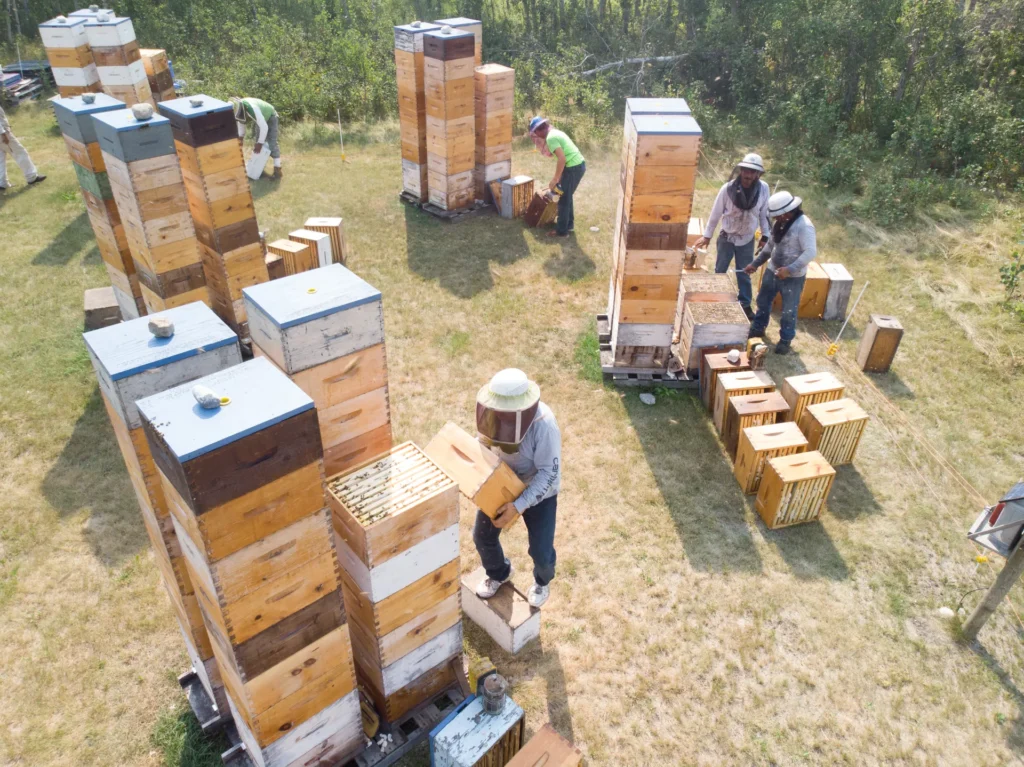
The Sustainable Beekeeping Behind Wendell Estate Raw Honey
With both increasing evidence, and growing public awareness and knowledge of the consequences of human activity on global ecosystems, “sustainability” has become a catchphrase. Though I feel sustainability is a critically important consideration in agricultural and manufacturing processes, as well as purchasing and lifestyle decisions, I also feel the term is over-used by marketing and the marketing for-profit “certifications” that attempt to catch the attention and convince a consumer that they are making responsible choices.
The organic food movement is a huge step towards sustainable agriculture as it works towards producing food in a way that’s healthier for the environment, safer for the consumer, healthier for the agricultural workers, and respects the lives of the livestock. However, when it comes to honey organic certification and the incentives in buying organic honey, the reality is complex and different from most other foods (I’ve written about Canadian Organic Regime (COR) organic certification here; and USDA-certified organic honey here). Large aspects of organic certification of honey are completely out of the beekeeper’s control. Probably few people realize that much Canadian Organic Regime (COR) “organic” honey and virtually all legitimate USDA-certified organic honey is imported cheaply from countries that often have lax or corrupt certification processes. Regardless of beekeeping practices, legitimate organic certification is simply unattainable to most North American beekeepers due to external factors.
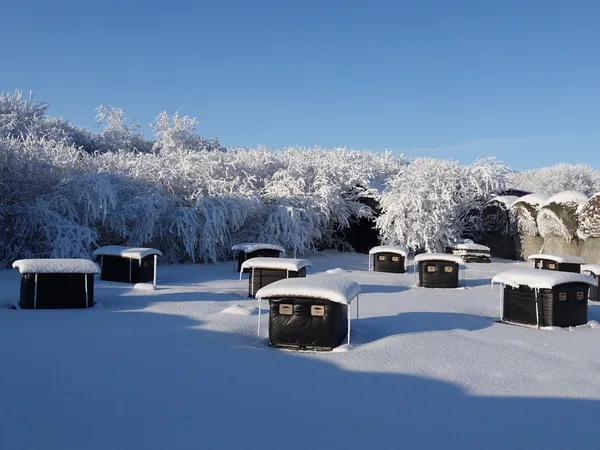
The organic food movement is a huge step towards sustainable agriculture as it works towards producing food in a way that’s healthier for the environment, safer for the consumer, healthier for the agricultural workers, and respects the lives of the livestock. However, when it comes to honey organic certification and the incentives in buying organic honey, the reality is complex and different from most other foods (I’ve written about Canadian Organic Regime Organic (COR) certification here; and USDA-certified organic honey here). Large aspects of organic certification of honey are completely out of the beekeeper’s control. Probably few people realize that much Canadian Organic Regime (COR) “organic” honey and virtually all legitimate USDA-certified organic honey is imported cheaply from countries that often have lax or corrupt certification processes. Regardless of beekeeping practices, legitimate organic certification is simply unattainable to most North American beekeepers due to external factors they can neither predict nor control.
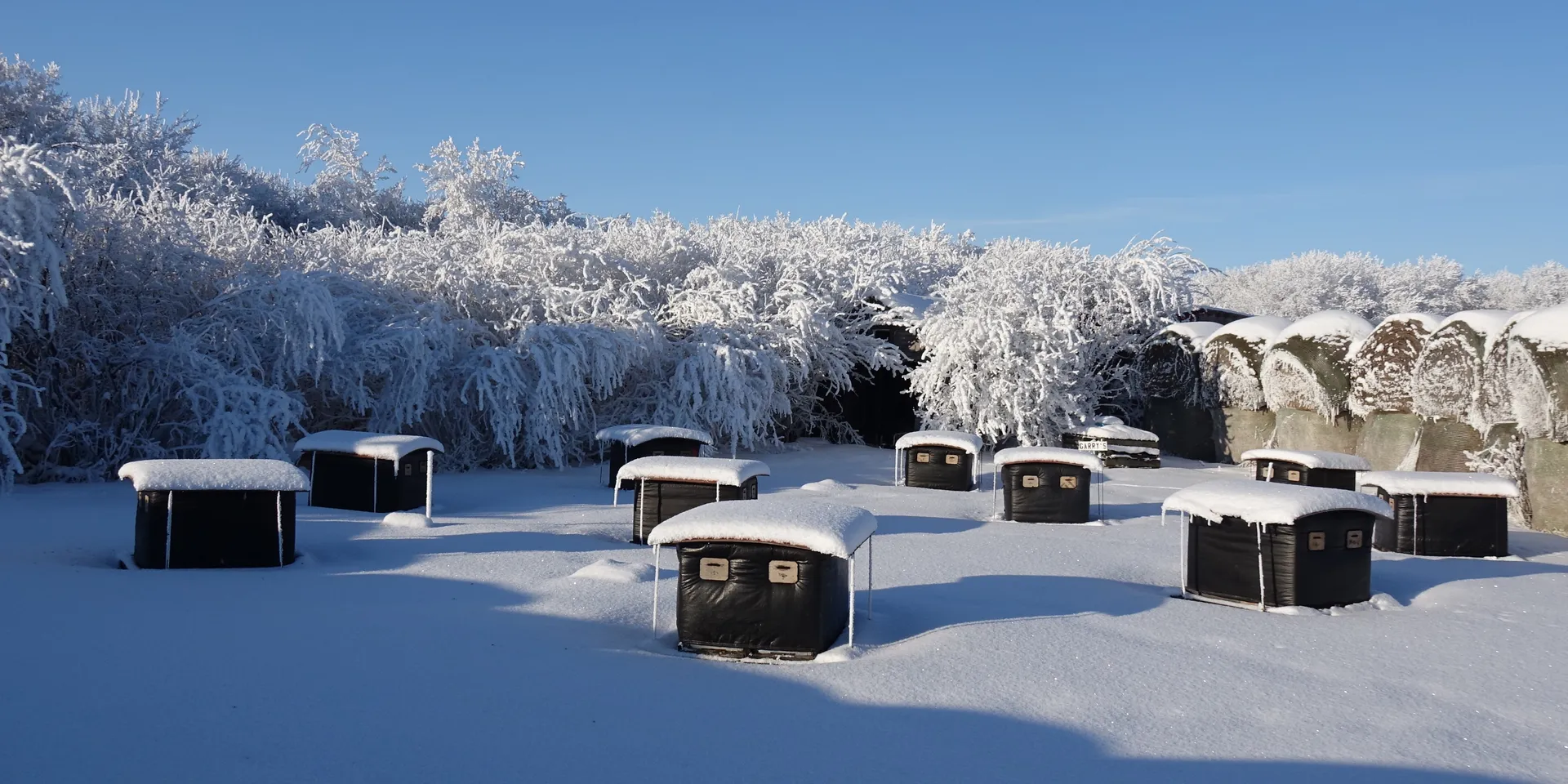
Organic certification is not feasible for Wendell Honey farm since our farm is located in “The Parkland Region” that, in addition to several major parks that give it its name, has a decent amount of commercial agriculture where each farmer/operator makes independent choices regarding their agricultural practices, which can negate legitimate organic honey certification for us at any time. However, at Wendell Honey farm we dedicate much effort and expense to practicing beekeeping in a sustainable way that protects the environment where the bees live, and where we, the beekeepers, live and share with the natural local flora and fauna. Although Wendell Honey produces a large volume of honey, it is in no way a “factory farm”. It’s a family operation with a dedicated team of managing partner beekeepers and other experienced beekeepers who are passionate about the health of the bees and the environment. Here’s a 3-minute video of Wendell Estate Honey founding owner, Tim Wendell, talking about a lifetime of beekeeping.
The remainder of this post is a partial list of practices at Wendell Honey Farm that reflect choices for more environmentally sustainable beekeeping methods, often at additional cost and resources, but that also optimize honeybee colony health and survival, and ultimately increase the chances of good honey crop yields.1, 2
Overwintering Beehives
The most substantial move to more sustainable beekeeping at Wendell Honey farm occurred in response to the Canadian border being closed to imports of American honeybees in the 1980s. At that time some diseases, like parasitic varroa mites, had invaded honeybee colonies in the USA, but weren’t yet prevalent in Canada. Rather than purchase more expensive packaged bees from far-off countries like Australia or New Zealand, Tim began keeping hives over winter. Prior to the border closure, the common practice on the Canadian prairies was to euthanize the colonies in the autumn and import new honeybees from the USA in the spring. Overwintering bees outside so that our colonies survived each year, was a huge change in beekeeping practices that led to and facilitated other important sustainable beekeeping practices.
Permanent Bee Yard Locations
Now that the honeybee colonies were kept alive through the winter, the choice was made to keep them in one location throughout the year. They are not moved for pollination or to seek more or different blossom for honey production. Even through the depths of winter, the honeybee colonies remain in their outdoor location rather than being moved to an indoor wintering warehouse. These practices reduce both the fossil fuels used transporting thousands of beehives multiple times a year and avoid the significant electricity consumption of wintering hives indoors.
Keeping the bees in place is also healthier for the bees: moving a honeybee colony is an added stress to the bees as they need to adapt to the new location. We keep colony movements to a minimum. We do move a beeyard occasionally, if a location was chosen in what turns out to be a suboptimal habitat for the bees. Bad apiary locations are assessed by poor winter survival, poor honey production and higher rates of colonies that fail to thrive over several years, and only after other causes are ruled out and other interventions fail. Sometimes physical changes to the location environment are made that are outside the beekeeper’s control. For example, in order to gain more seed-able land, the landowner may bulldoze a stand of trees that sheltered the bees from the frigid North winter winds. The bee yard is then moved to a more sustainable new permanent location.
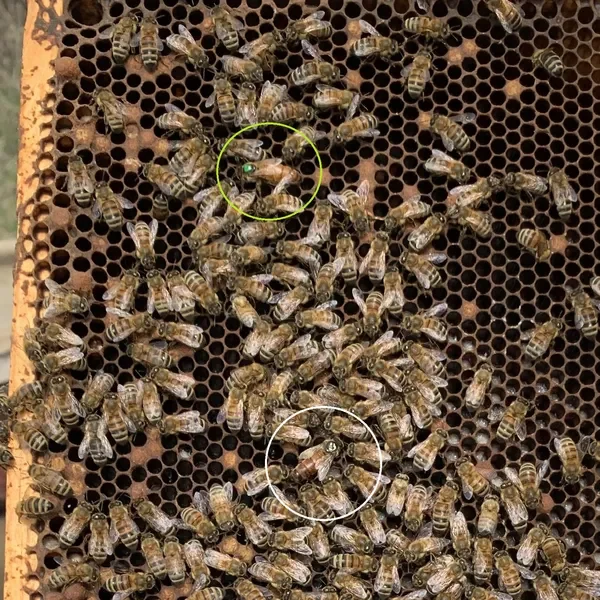
There have been many articles delineating the negative effects on colony health across the United States due to the large honeybee migrations to provide pollination services. In addition to the move itself being stressful to honeybee colonies, movements for purposes of pollination services bring colonies from many different beekeepers from many different places into close proximity. This provides a perfect environment for the spread of serious bee diseases. The worst of this is probably the spring almond pollination in California. It is estimated that as many as 2/3 of all American honeybee colonies take part in this lucrative pollination, which stresses the health of the honeybee colonies involved. Wendell Honey farm only rarely participates in paid pollination services, and mostly as a service to our neighborhood farmers. In some of these cases, an apiary may be relocated a short distance to satisfy the farmer that their pollination needs are being met. We are also fortunate in the sense that our neighboring beekeepers respect a buffer zone between each other’s bee yards, decreasing competition for blossom and spread of disease.
Wendell Honey's Queen Rearing Program
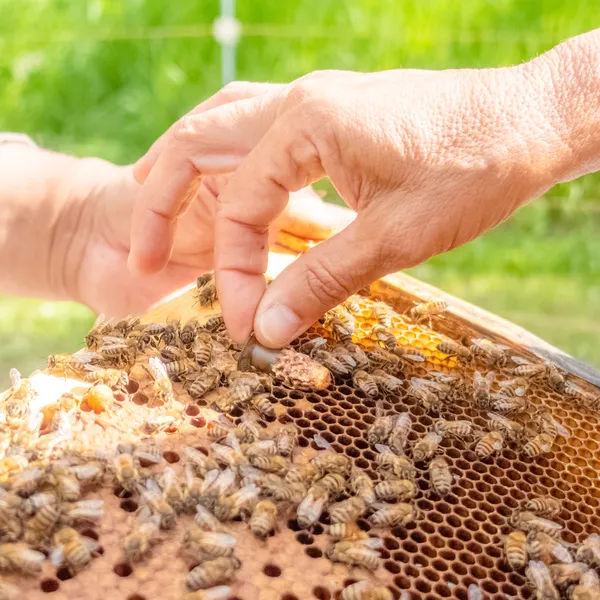
Tim started raising his own breeder queen bee stock shortly after he began over-wintering his bees. Now that we were keeping the same colonies year after year, it made sense to work at optimizing the survival, honey production and sustainability of our bees by selectively raising bees that were suitable to thrive in our local environment. This is accomplished by raising young queens from colonies that have proven themselves over several years. Breeder stock was chosen from colonies that appeared resistant to common diseases (often through hygienic behaviors), continuously produced above-average honey crops, and tended to replace a failing old queen bee on their own, without beekeeper intervention. Several decades later, the queen rearing program has expanded, and Wendell Honey has become self-sufficient regarding raising our own queen stock. The queen-rearing program is now led by Zulema Castillo, a veterinarian doctor that specializes in raising honeybees and queens, and Dan Margarit, with over 40 years of beekeeping and queen rearing experience. Over many (honeybee) generations of selective breeding, our bees now tend to have good winter survival and above average honey production (both of which indicate strong, healthy colonies) and a gentle, non-defensive attitude that facilitates working with them with minimal protective clothing (ultimately meaning the bees are less disturbed or interrupted as we perform colony health checks and maintenance or harvest the honey). This reduces our reliance on purchasing new honeybee packages each spring to replace winter losses.
Wendell Honey beekeeper and videographer, Brent R. Ross has made this mini-documentary of our queen rearing program.
Non-chemical, Minimally Invasive Harvesting Methods.
Wendell Honey uses queen excluders in all of its beehives. This is a metal screen that smaller worker bees can fit through, but the larger queen bee cannot. By keeping the queen and her brood confined to lowest 2 boxes of each hive, we don’t disturb them at all during harvest. Boxes of empty honeycombs (honey supers) for harvesting honey as they fill up are then stacked on top of the excluder and “brood chamber” below. This means that, as a rule, frames of bee brood are not taken to the extracting facility where they would then be returned to a different hive. This practice also reduces queen losses (that can severely weaken or even result in colony death if not remediated in time).
A common harvesting technique is to place a chemical board under the top cover of the hives. The smell of the chemical board repels the bees so they tend to escape the smell by going down to the bottom of the hive. The upper harvest-able honey supers become relatively empty of bees and the beekeepers can simply load them onto the truck. Wendell Honey has never used chemical boards for harvest. Instead, we first remove the honey supers from the hive in the morning (with their bees inside, largely undisturbed) and set them carefully beside their beehive. We return in the afternoon to collect the honey supers. After several hours, most of the worker bees in full the honey supers sitting beside the hive have flown out to forage and then returned to their hive with a full load of nectar, leaving the full honey supers nearly empty of bees. The few remaining bees are blown harmlessly out in front of their own beehive using forced air blowers. A testament to how non-disruptive this is to the beehives is the fact that the beekeepers can often work shirtless, wearing only shorts and a hat and veil while doing the hard physical work of collecting the full honey supers (weighing up to 40kg/90lbs), while the bees simply carry on their daily business.
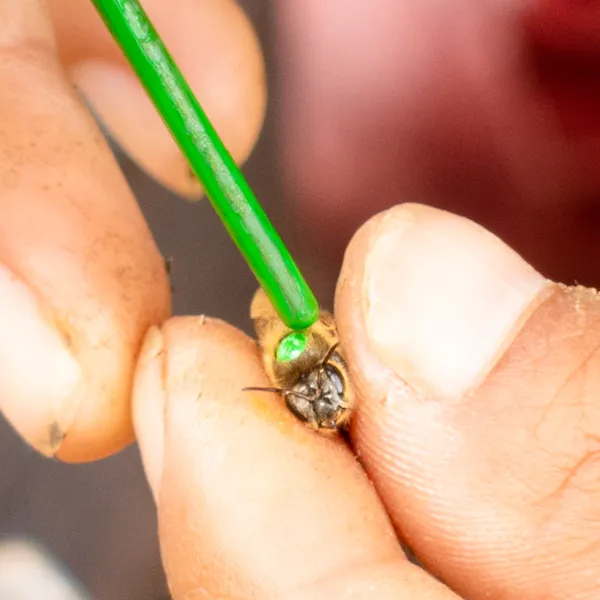
Living with Bears
Bears love honey and bee brood. A bear can destroy an entire apiary if unchecked, killing honeybee colonies and forcing others to abscond from their destroyed hive. Wendell Honey uses neither bullets nor poison to control these threats (two methods employed commonly decades ago, and perhaps still used by some beekeepers). Instead, solar powered electric fences are placed around every bee yard to keep these threats out in a way that is harmless to the bear. A shout out to the Saskatchewan Beekeepers Development Commission (SBDC) and the Saskatchewan Department of Agriculture for their active support in encouraging beekeepers to use solar powered electric fences for this purpose, and for subsidizing the purchase.
Non-chemical Ground Foliage Control
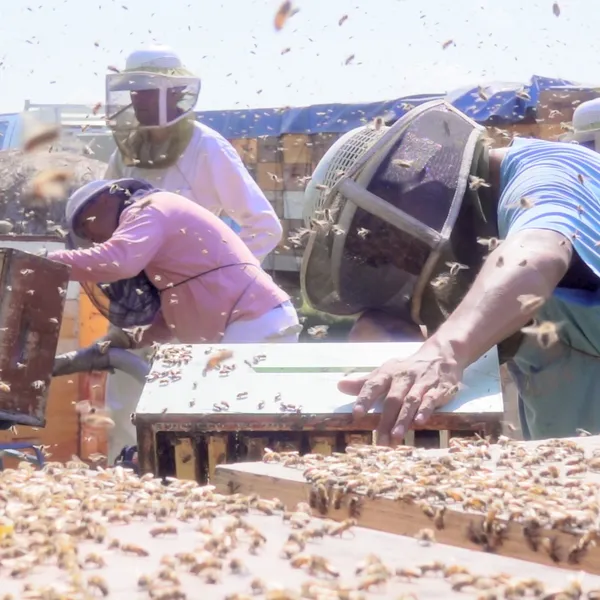
Beehives are healthiest when they have adequate airflow through the hive. Air circulation is actively controlled by the hive for purposes of maintaining healthy humidity and temperature as well as maturing foraged nectar into honey. Left unchecked, lush summer prairie grasses and plants grow tall around the hives, obstructing airflow through the main bottom hive entrance. Herbicides offer a cheap and easy solution to the tall grass issue in the apiaries. Eschewing herbicide use, Wendell Honey beekeepers cut the grass in every one of our 100+ apiaries on a regular basis throughout the summer. We feel that the added effort and expense of manually cutting the foliage is worth it for environmental reasons.
Durable Wooden Beehive Equipment
Wendell Honey’s beehive equipment is almost all made from wood and wax rather than cheaper plastic. Wood and wax are not only natural and biodegradable, but they are more durable than plastic. Unlike plastic, wooden hive equipment is readily repairable. A wooden honey super or honeycomb frame can easily last decades. When it is damaged, rather than discard it, it is repaired if possible. In the interests of sustainability and health, Wendell Estate preserves new raw wooden beehive boxes by dipping them in paraffin.
A testament to durability: In the lead image in this post, I recognize a green honey super (box of honeycomb frames) in the upper left corner of the photo of a style that indicates it was new over 3 decades ago when I started working in the bee yards as a teenager. Still in use and looking good.
Final Words
I’ll just mention again that we’re all very proud of Wendell Honey owner and Wendell Estate founding owner, Tim Wendell on being awarded the Fred Rathje Memorial award by the Canadian Honey Council in 2024. This award is given to one individual in Canada each year recognizing “outstanding efforts to improving the Canadian beekeeping industry”. Here’s another 3-minute video of Tim talking about beekeeping changes over his long career.
If you’d like to see more detailed beekeeping posts like this one, please let us know in the comments. We love to talk about beekeeping.
Notes:
- Two factors have helped Wendell Honey farm survive years of artificially depressed commodity honey prices: Our exceptional honey yield per hive (resulting from hard working bees and months of careful health management); and having Wendell Estate Honey that creates a fair-price market for our finest honey.
- Some honey brands employ what has been termed “beewashing” in their marketing. Either marketing their brand as being bee-friendly, supporting bees and beekeepers (when in reality they simply buy honey on the commodity prices at market rates), or, even more misleading, marketing themselves as if they are the beekeeper, using phrases like “the health of our bees is an utmost priority” (sometimes copying paragraphs directly from our website). In reality some of these are simply marketing gimmicks. This is not meant in any way to disparage the actual farm brands of honey that do come from real beekeepers – there are many excellent farm brands out there, and we encourage you to try any honey from any of those other beekeepers. However, if shopping by reading honey brand’s website, you need to read carefully to determine which are real beekeepers and which are only “marketing beekeepers”, or using beewashing (“Saving the honeybees”) to convince you that you’re doing a service by buying their honey.
Jeremy Wendell
Share this story

2 comments
Hi, do you breed specific breeds of queens or just hybrids ? And what queens have most of your breeding stock originated from? Or do you sometimes bring in breeders from different sources ?
Thanks
Hi, Tyson. In addition to our own queens we breed from Buckfast queens (which would also account for much of our own stock by now).